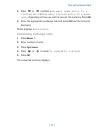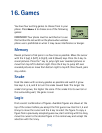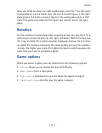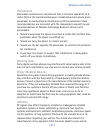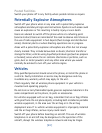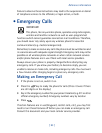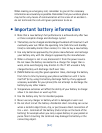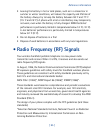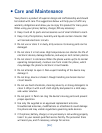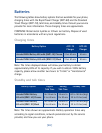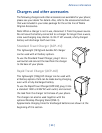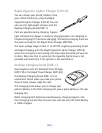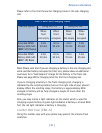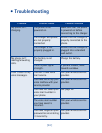[ 85 ]
Reference information
• Leaving the battery in hot or cold places, such as in a closed car in
summer or winter conditions, will reduce the capacity and lifetime of
the battery. Always try to keep the battery between 59º F and 77º F
(15º C and 25º C). A phone with a hot or cold battery may temporarily
not work, even when the battery is fully charged. NiMH batteries’
performance is particularly limited in temperatures below 14º F (-10º C).
Li-Ion batteries’ performance is particularly limited in temperatures
below 32º F (0º C).
• Do not dispose of batteries in a fire!
• Dispose of used batteries in accordance with any local regulations.
• Radio Frequency (RF) Signals
Your wireless handheld portable telephone is a low power radio
transmitter and receiver. When it is ON, it receives and also sends out
radio frequency (RF) signals.
In August, 1996, the Federal Communications Commission (FCC) adopted
RF exposure guidelines with safety levels for handheld wireless phones.
Those guidelines are consistent with safety standards previously set by
both U.S. and international standards bodies:
ANSI C95.1 (1992)*, NCRP Report 86 (1986)*, ICNIRP (1996)*.
Those standards were based on comprehensive and periodic evaluations
of the relevant scientific literature. For example, over 120 scientists,
engineers, and physicians from universities, government health agencies
and industry reviewed the available body of research to develop the ANSI
Standard (C95.1).
The design of your phone complies with the FCC guidelines (and those
standards).
*American National Standards Institute, National Council on Radiation
Protection and Measurements; International Commission on Non-
Ionizing Radiation Protection.



